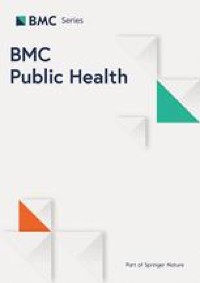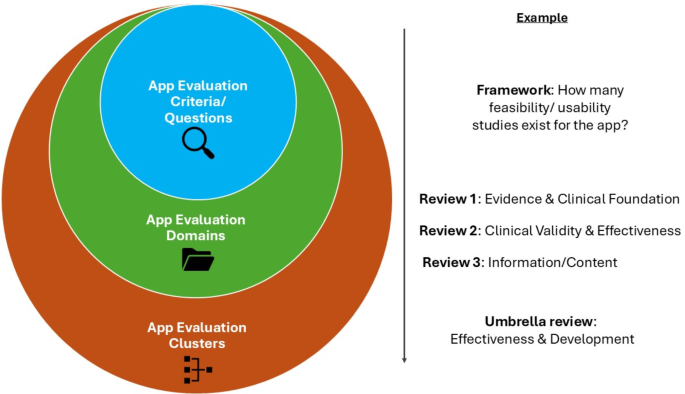Country- and app-level factors affecting the adoption and evaluation of COVID-19 mobile apps | BMC Public Health

COVID-19 appeared in late 2019 in China and is still impacting the world. Since the virus has created an unprecedented health crisis worldwide, efforts were made to reduce the risk of COVID-19 by governments and other institutions. Mobile apps are considered practical and valuable tools for managing health [1, 2]. More than 5 billion people are currently using mobile phones [3], and 204 billion apps were downloaded in 2020 [4]. Apps are used worldwide as tools for various purposes in current days. By now, many COVID-19 mobile apps have been developed as an anti-epidemic measure and are available in app stores, including Google Play (Android) and Apple App Store (iOS).
Objective
This study aims to analyze currently existing COVID-19 apps systematically. Specifically, we examine what country-level and app-level factors are associated with adopting and evaluating the apps. This study could provide a global perspective on COVID-19 app usage during the pandemic.
Related works
As of now, studies on COVID-19 apps are surrounding three areas. A majority of works focus on contact tracing. Contact-tracing apps have emerged in response to the outbreak of COVID-19. Apps with contact-tracing functions can assist identification of people who may have contact with an infected person and collect further information about these contacts [5].
First, scholars are interested in the architectures of contact-tracing apps, namely centralized, decentralized, or hybrid design [6, 7]. A centralized architecture means that the government authority controls personal data collection, while the decentralized approach means that personal data is stored only on personal devices. Therefore, a trade-off exists between data privacy and effective disease control by the government [6]. The development and deployment of such architectures and technologies are under ongoing discussion.
Second, there are concerns about the ethical problems of contact-tracing apps [8, 9]. These questions are such as in the context of the COVID-19 pandemic, whether the previous data protection criteria can be justifiable; the trade-off between liberty and privacy; whether the installation of these apps should be compulsory; whether data should be deleted at the end of the epidemic; etc. [9]
Third, people’s attitude toward contact-tracing apps is another critical aspect. Using experiments or surveys, researchers assess attitudes toward contact-tracing apps, including experience of use, privacy concern, and willingness to adopt [6, 10,11,12,13,14,15,16,17]. Studies found that people hold different attitudes toward these apps. Some refuse to use them, while some voluntarily accept surveillance or even become surveillance agents to monitor the behavior of others to obtain a safe living environment [18].
Another group of studies is from the technical perspective. These articles review existing COVID-19 apps in terms of features and functionalities [1, 19,20,21,22]. For example, Ming et al. reviewed the COVID-19 apps launched in the early days of the pandemic and found that most of the apps incorporate the functions of case mapping or home monitoring surveillance [19]. Noronha et al. reviewed the COVID-19 apps in Canada and assessed the goals and characteristics of these apps [22].
Finally, there are many articles about the assessment of COVID-19 apps. Scholars use specific rating scales to assess the quality, functionality, design, engagement, and other features of COVID-19 apps [21, 23, 24]. These studies mainly aim to provide overviews of existing apps for the further development of new apps and suggest what should be included as vital features [21, 23].
Research gap
For now, the function of contact tracing is the focus of research on COVID-19 apps. For instance, attitudinal research is mainly limited to contact-tracing apps. These studies use experiment [13] or survey [6, 11] to assess people’s attitudes, restricting the findings to the individual and the regional level. Besides contact tracing, there are many other functions COVID-19 apps possess. These apps, other than contact-tracing apps, have received less scholarly attention. However, learning what kinds of COVID-19 apps have received more adoptions and higher evaluations is essential. It might help scholars and health professionals enhance their understanding of app use in a crisis.
The current study will provide a global perspective on the adoption and evaluation of COVID-19 apps. Using comprehensive data from Google and Apple app stores, we can assess people’s adoption and evaluation based on the number of downloads, ratings, reviews, and rating scores of the apps. Our study will extend previous studies on COVID-19 apps to a much broader perspective as we have collected almost all recent existing COVID-19 apps worldwide, regardless of language and country. In addition, not only are the app-level factors, such as features and functions, decisive for the adoptions and evaluations, but also country-level factors would be critical potential predictors. Our data allow us to access such macro-level factors, rarely studied previously.
Rationale and hypotheses
According to a European study, people’s perception of benefits, self-efficacy, and perceived barriers are all associated with willingness to use the COVID-19 contact-tracing apps [16]. Beyond individual factors, country-level factors might also be important predictors of the adoption and evaluation of COVID-19 apps. For example, regarding the political system, people in democratic countries concern more about individual privacy and state surveillance [25]. Therefore, democratic societies might have a lower adoption rate of apps that need to collect personal data than non-democratic societies. However, many democratic countries are developed countries that might have a higher level of digital technology. People might rely more on technologies to obtain information and trace cases and contacts [11]. Besides, the number of infected patients in a country might influence the adoption of COVID-19 apps. A large number of infected cases goes with a higher perception of risk and severity. Thereby, the adoption rate might increase. Based on the discussion above, we are concerned about the macro-level predictors of COVID-19 app adoption. Thus, we ask:
RQ1: How do country-level factors (i.e., political system and the number of infected cases) influence the adoption of COVID-19 apps?
In addition to adoption, country-level factors can be potential predictors of evaluation. After downloading and using the apps, people would evaluate or rate them based on their experiences and feelings. In democratic societies, where there is higher freedom of speech and less self-censorship, people might be more willing to express their dissatisfaction and criticism. Therefore, apps in democratic countries are expected to receive a lower evaluation in terms of lower rating scores. But on the other hand, most democratic countries are developed with a much higher level of digital technology. Apps deployed in these countries could be more advanced, leading to a better user experience than those from less developed countries. Therefore, people are also likely to rate them higher. We thus ask:
RQ2: How do country-level factors (e.g., political system and the number of infected cases) influence the evaluation of COVID-19 apps?
Apart from country-level factors, another set of factors that might influence the adoption and evaluation of COVID-19 apps is app-level factors. In this study, we focus on the functions and developers of the apps. According to the uses and gratifications theory, media users use specific media to meet their desires and needs to achieve gratification [26]. In the scenario of COVID-19 apps, we can assume the user chooses a specific app because a particular set of functions that the app has would satisfy the needs of the user. Besides, whether the government or other institutions develop the app is also a critical factor for adoption. Research has found that a lack of trust in the government is one of the main barriers to adopting contact-tracing apps [11]. Therefore, whether or not the app is developed by a governmental institution would be very critical to the adoption rate. Based on the discussion above, we ask that:
RQ3: What is the influence of app-level factors (i.e., functions and developers) on the adoption of COVID-19 apps?
Since people would evaluate apps based on their experiences of using the apps, functions are also essential for evaluation. If people achieve gratification through using specific functions of an app, they might feel that the app is helpful for them and then give a high score. However, if an app’s function does not meet the need of users, it will be rated low. Some specific functions, such as contact tracing, are beneficial during the pandemic. Therefore, apps with the function of contact tracing might receive a higher score. For government-developed apps, given the varying levels of trust of different governments, the evaluation can vary accordingly. In sum, we ask:
RQ4: What is the influence of app-level factors (i.e., functions and developers) on the evaluation of COVID-19 apps?
Since the contact-tracing function of COVID-19 apps is currently on top of the research agenda, we also concern about the factors which are potentially crucial for the development of the contact-tracing function of an app. Therefore, we propose the following research question:
RQ5: What country-level and app-level factors will associate with the development of COVID-19 contact-tracing apps?
link






